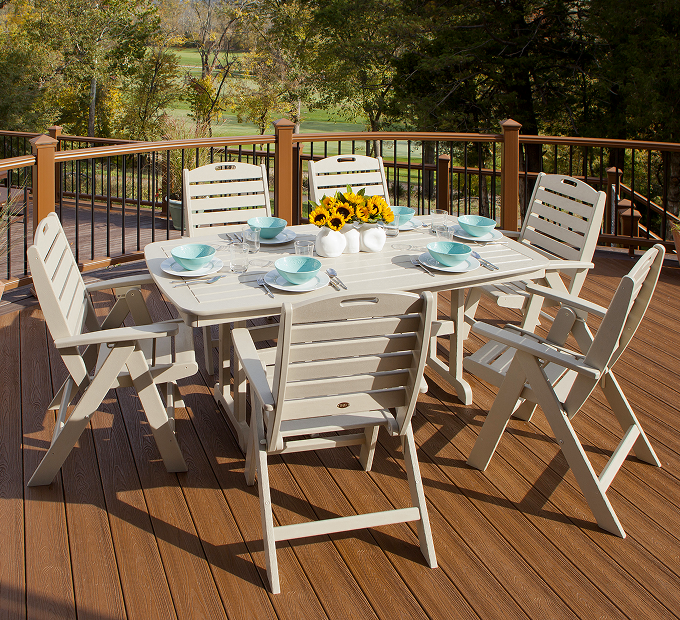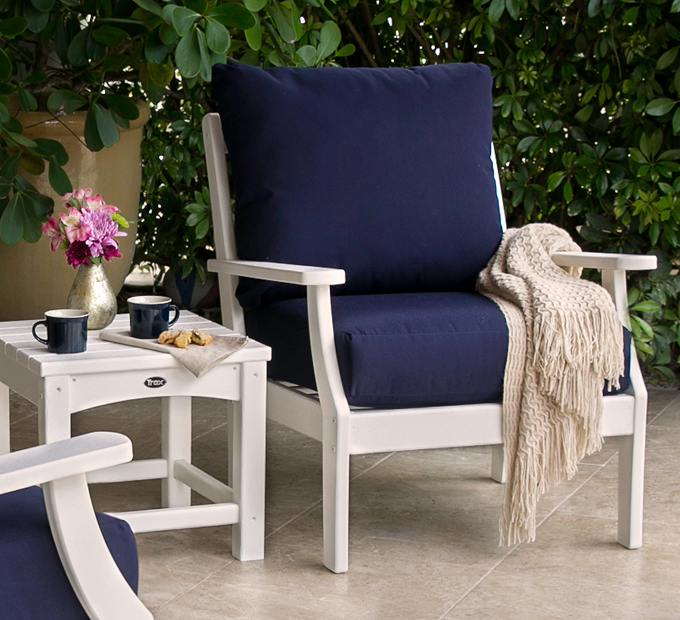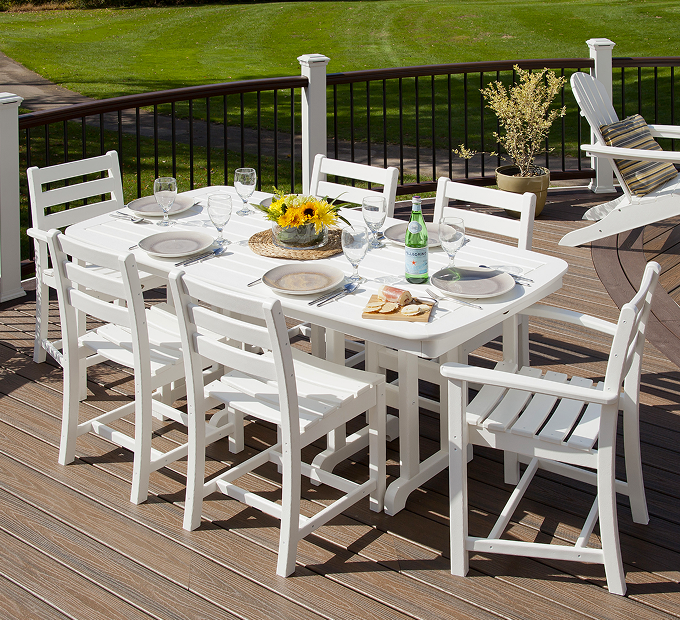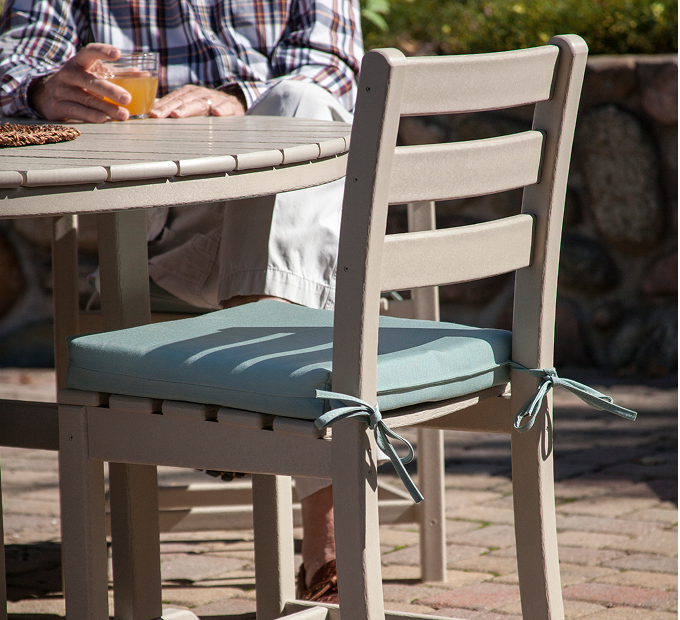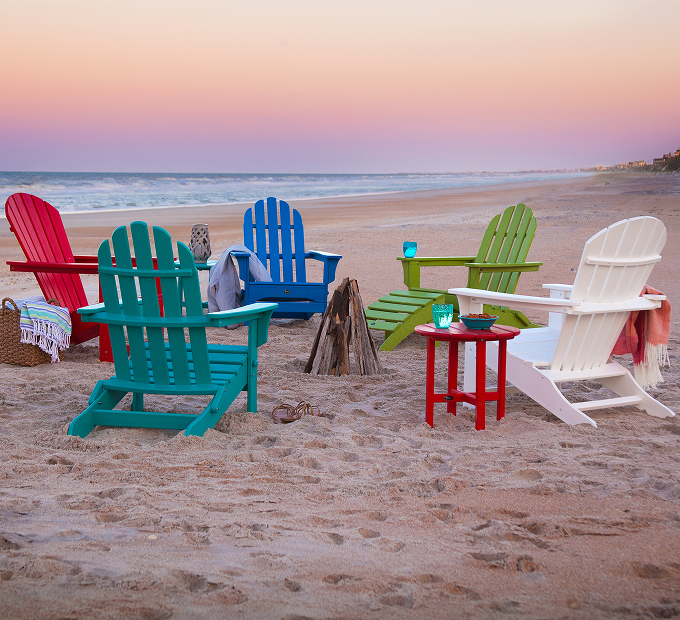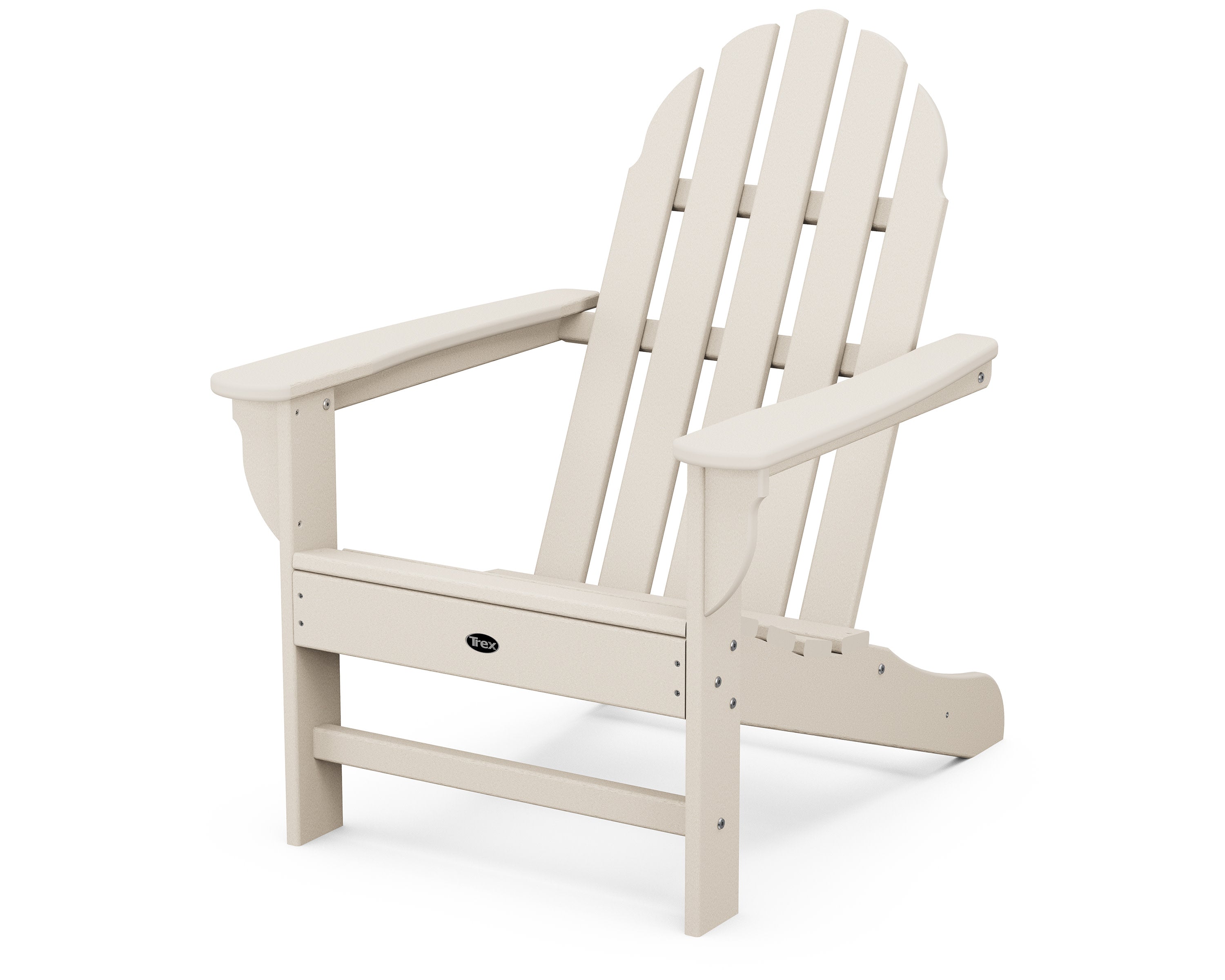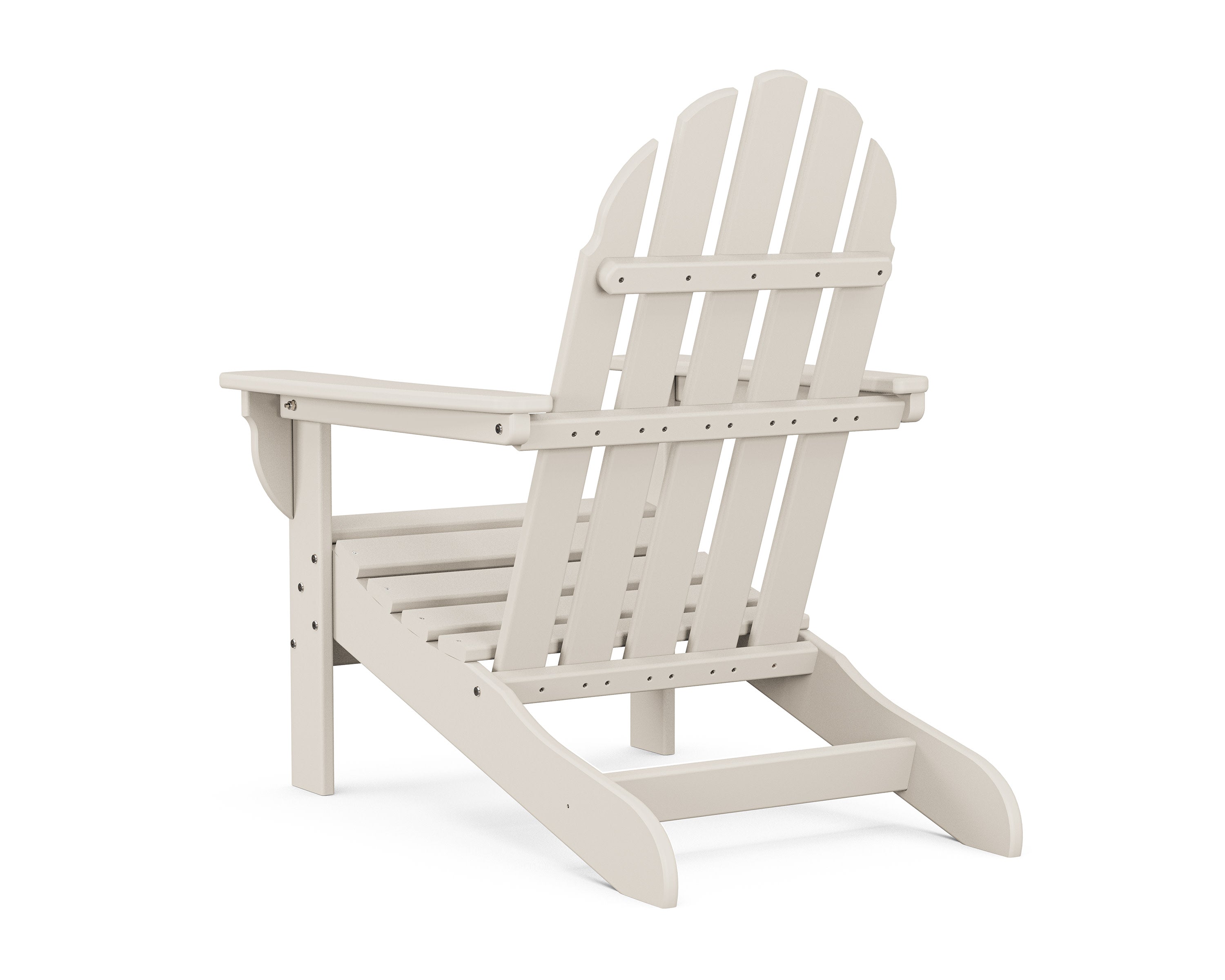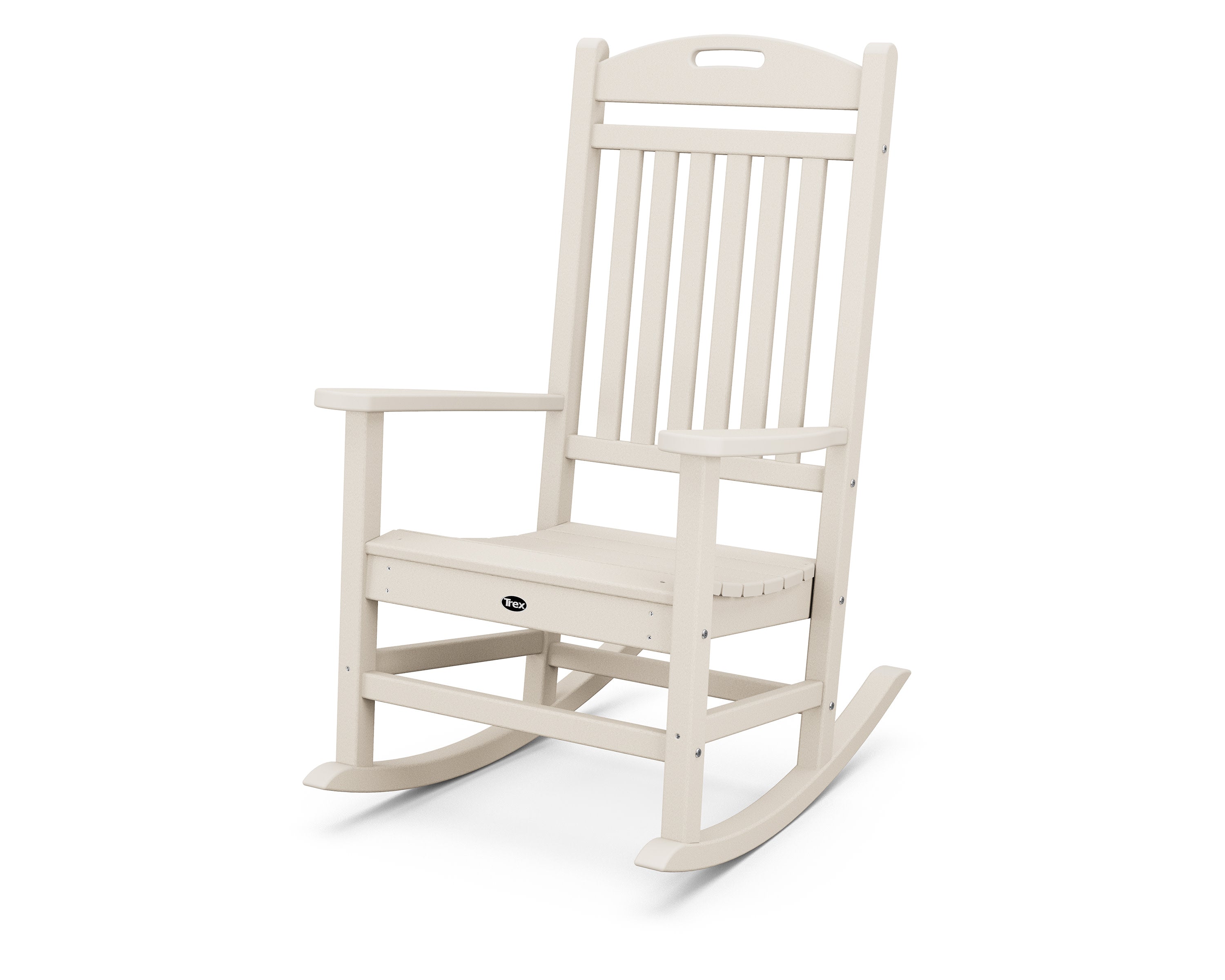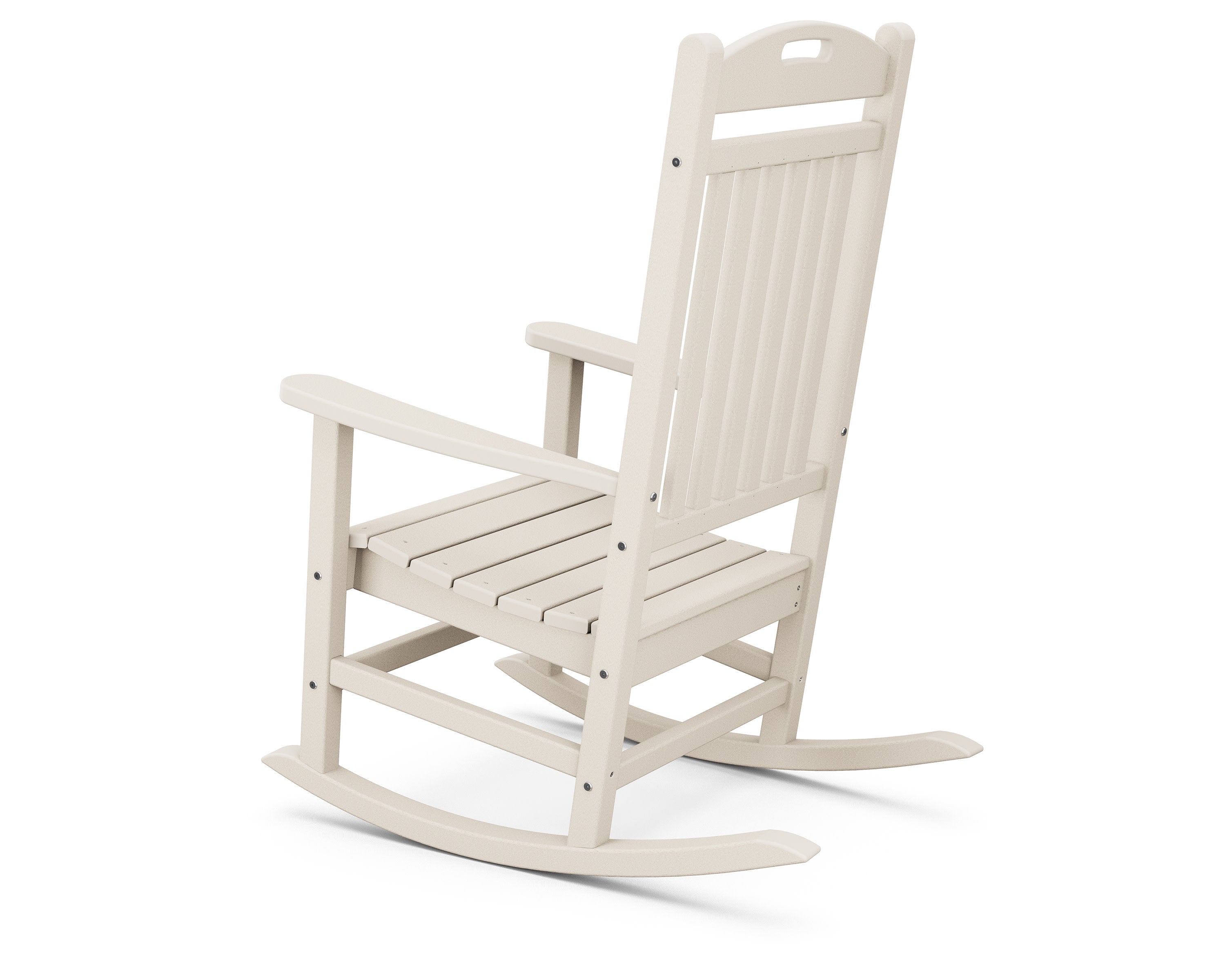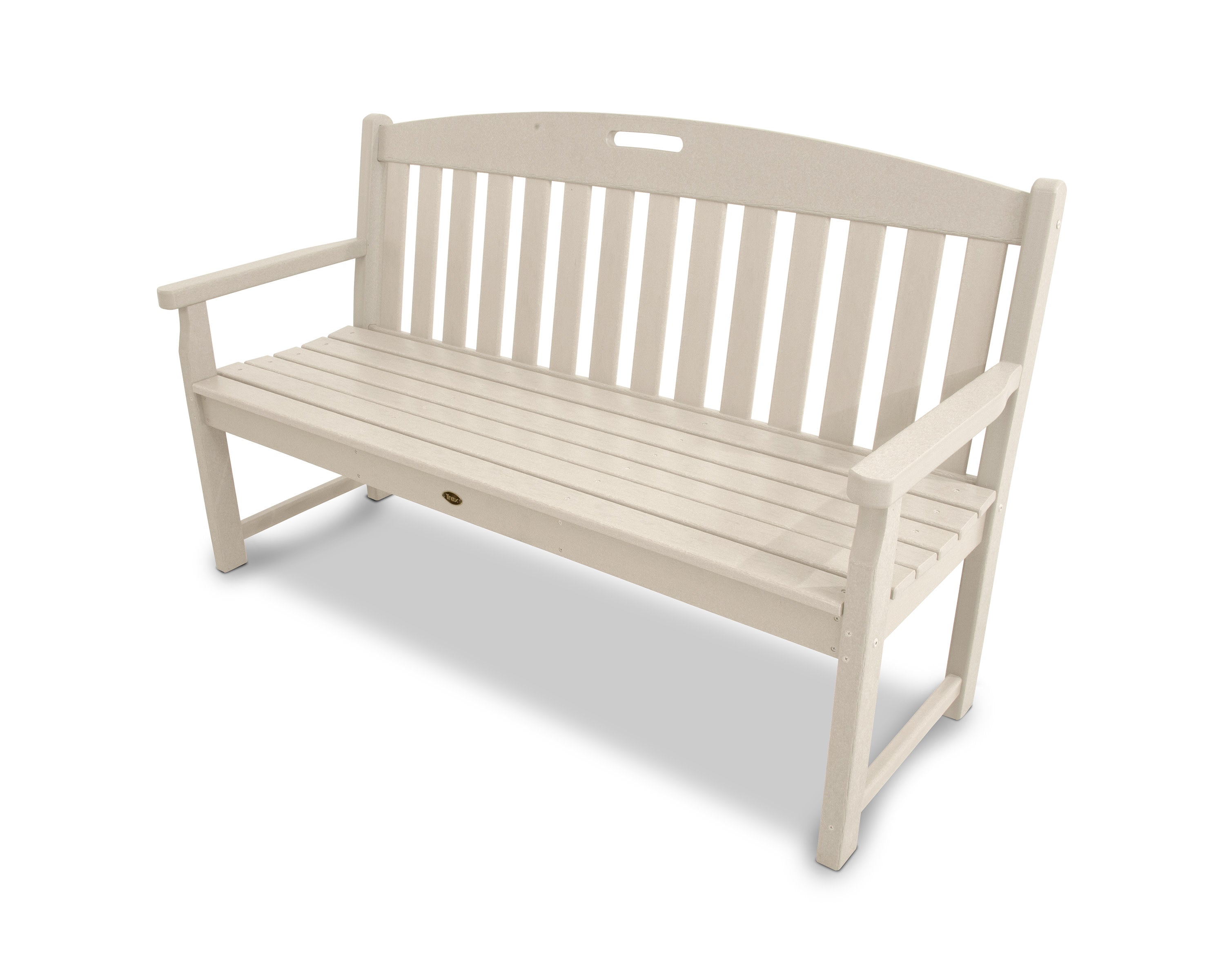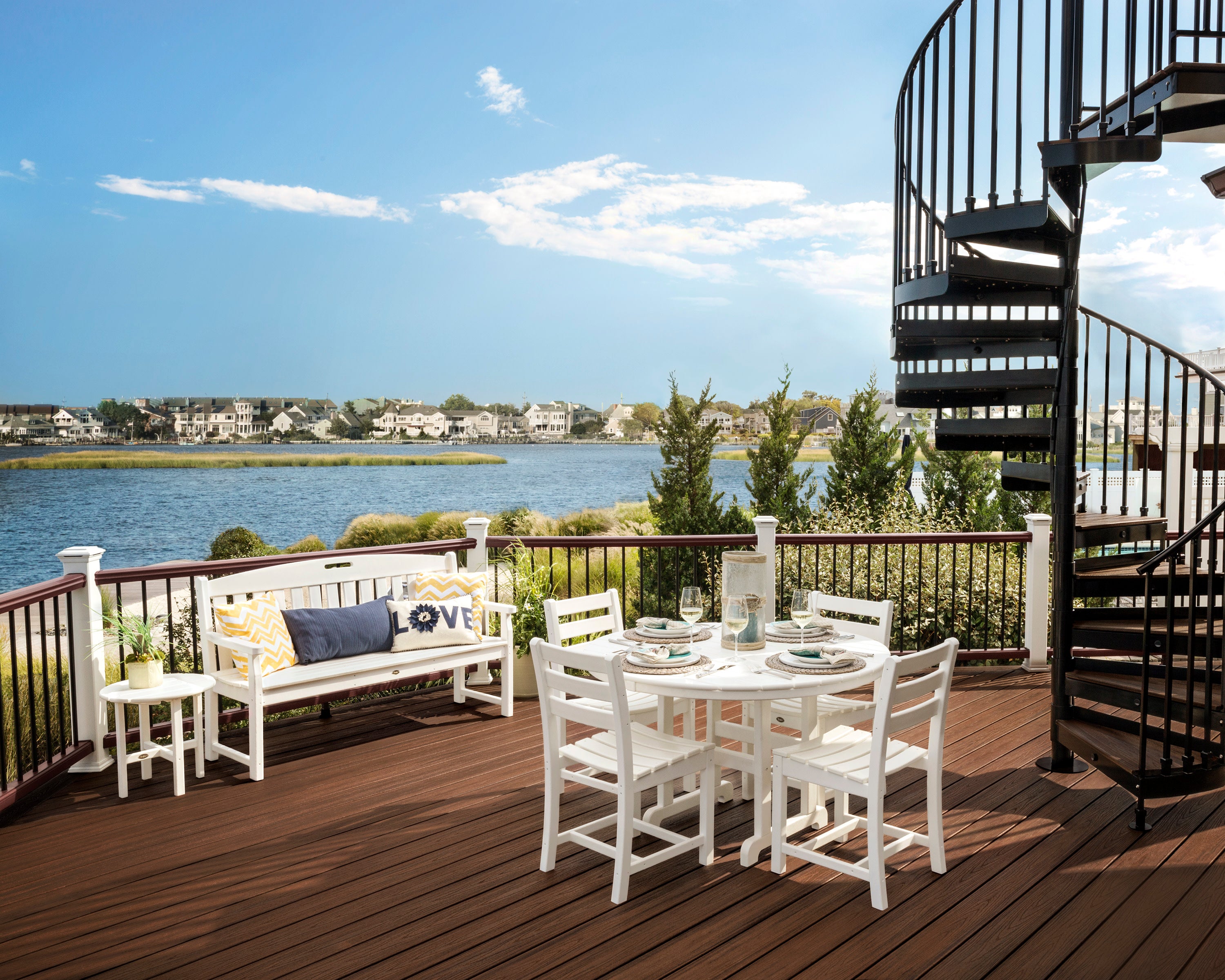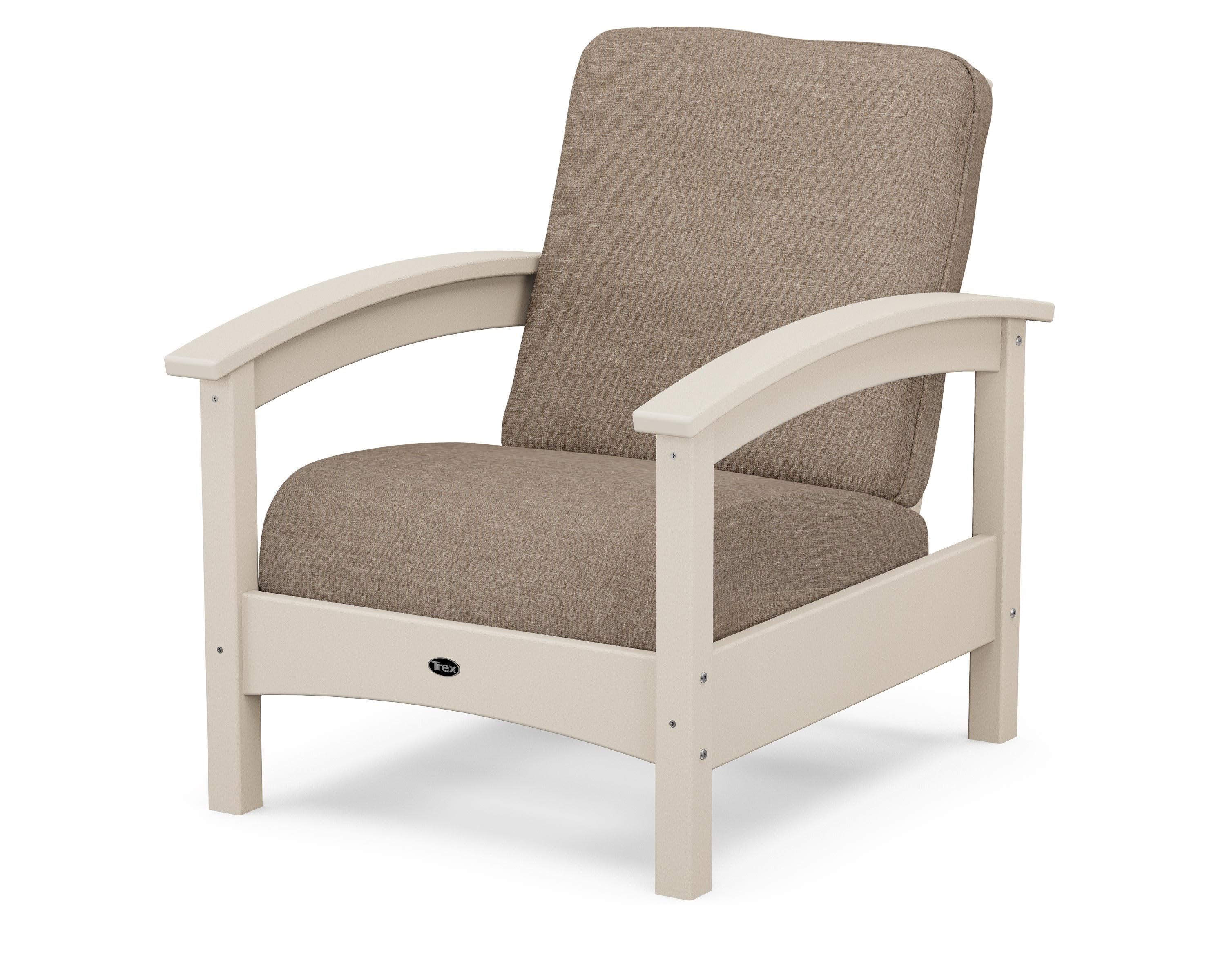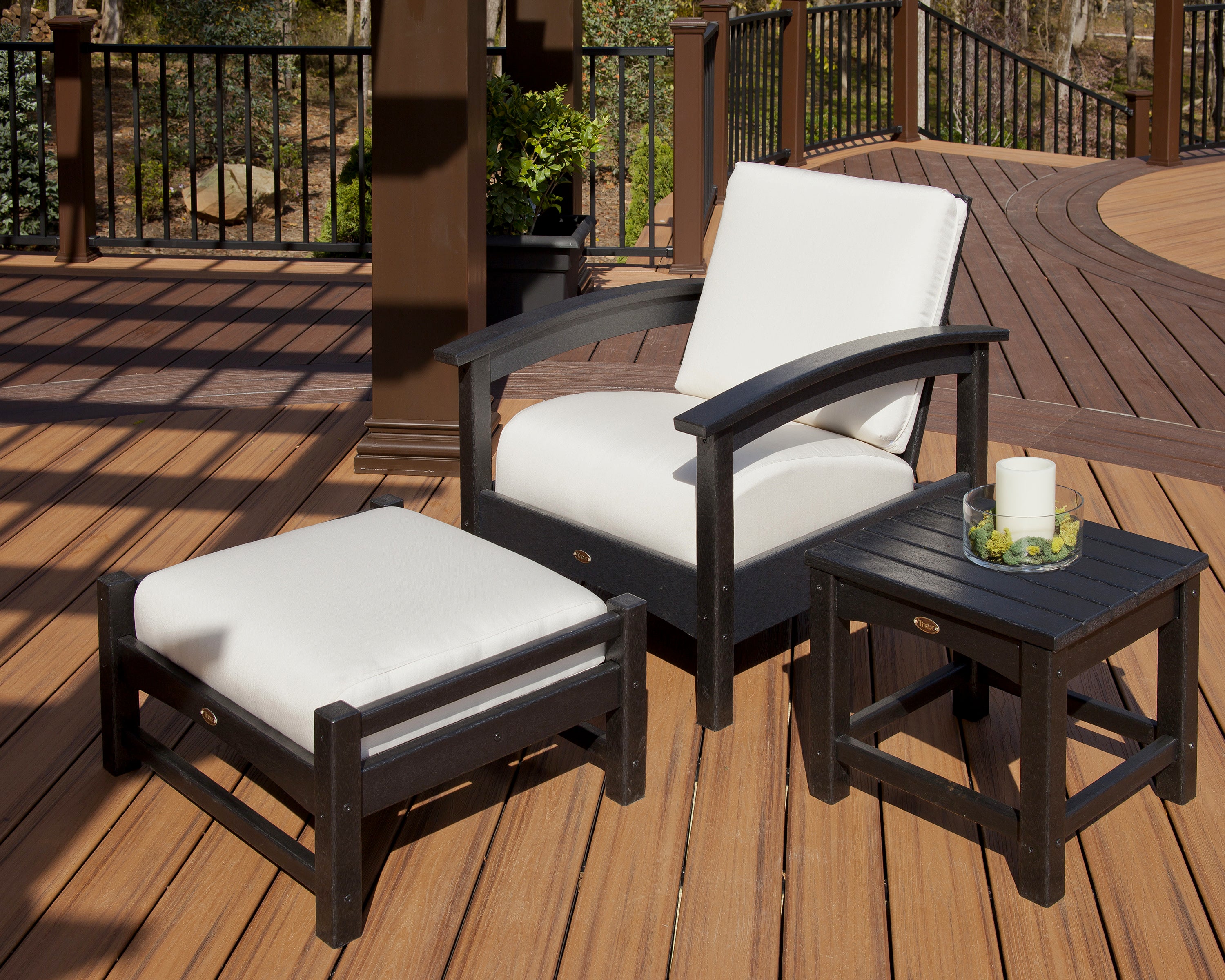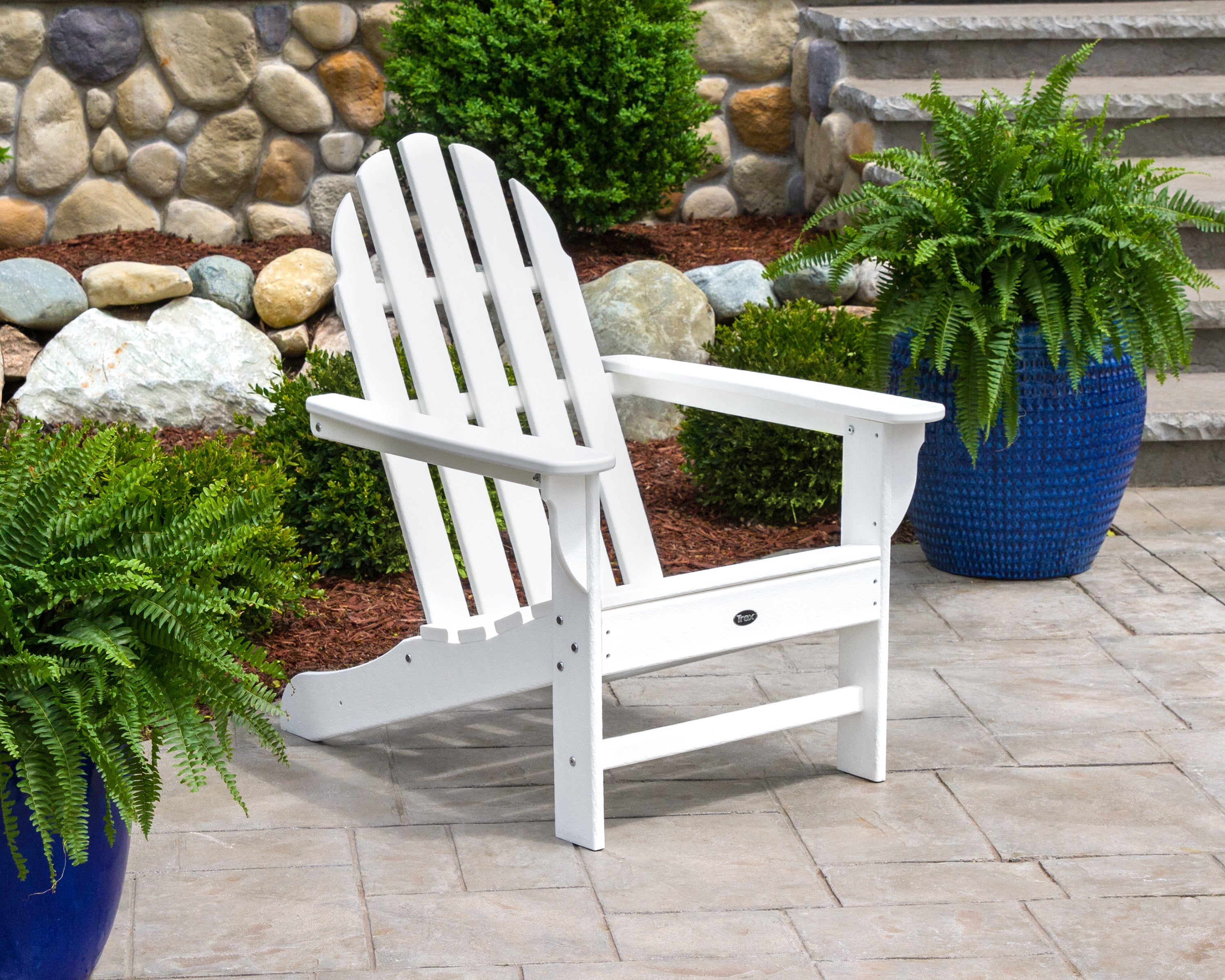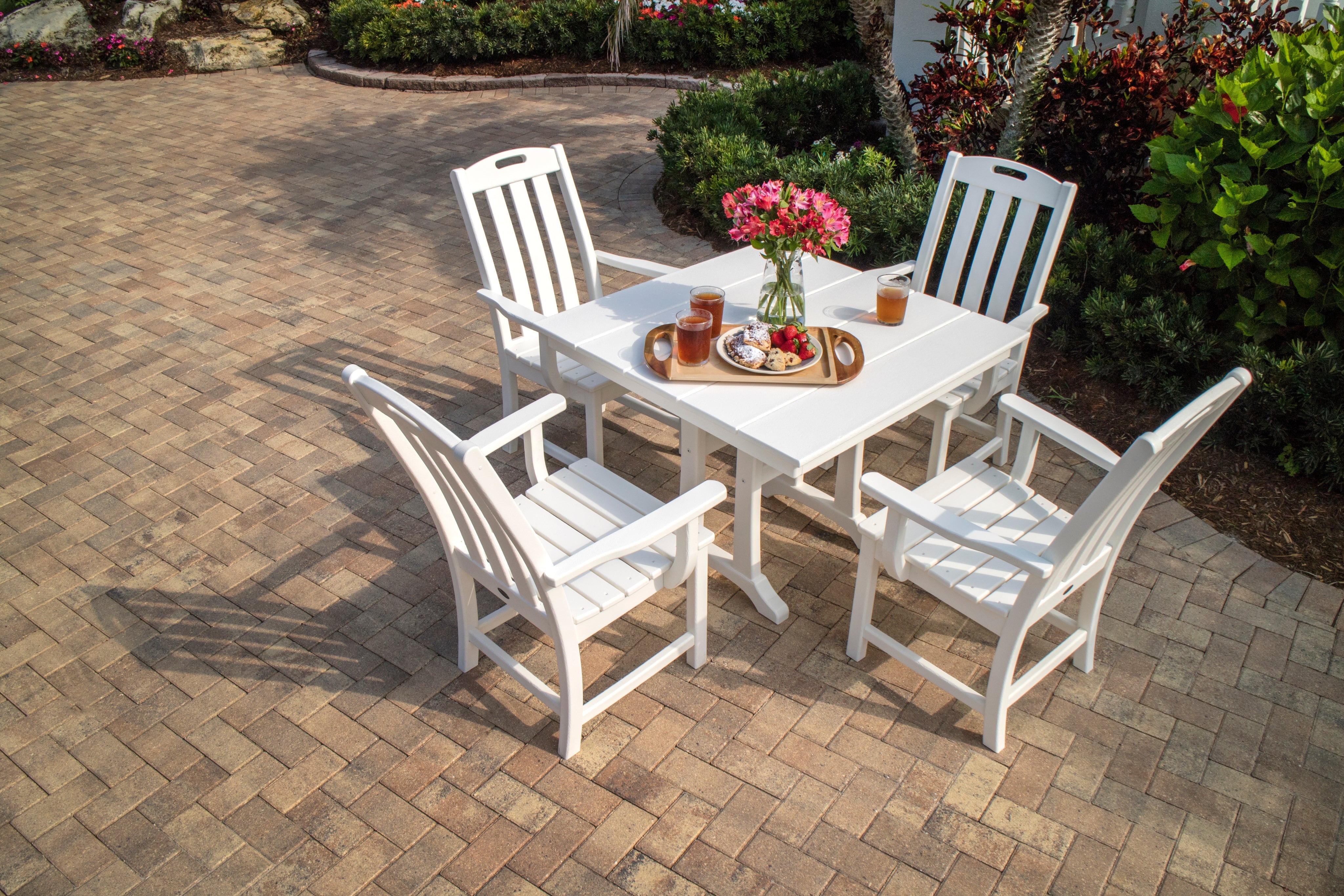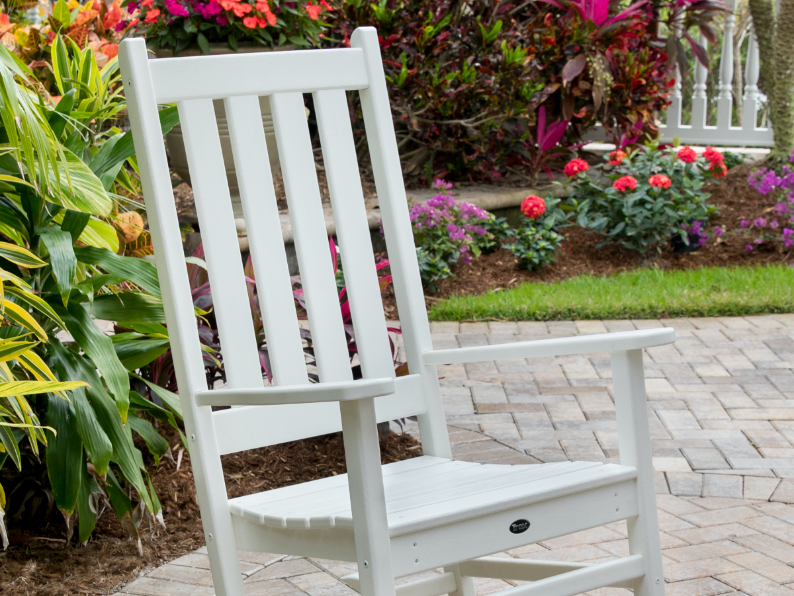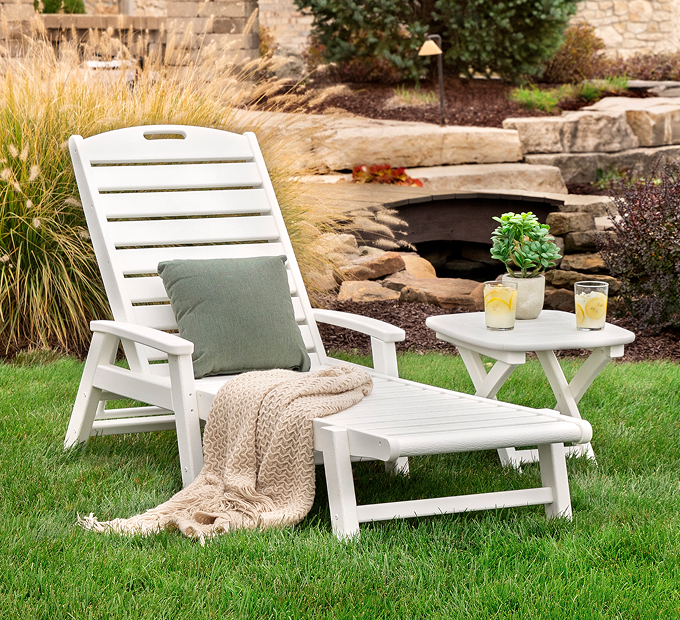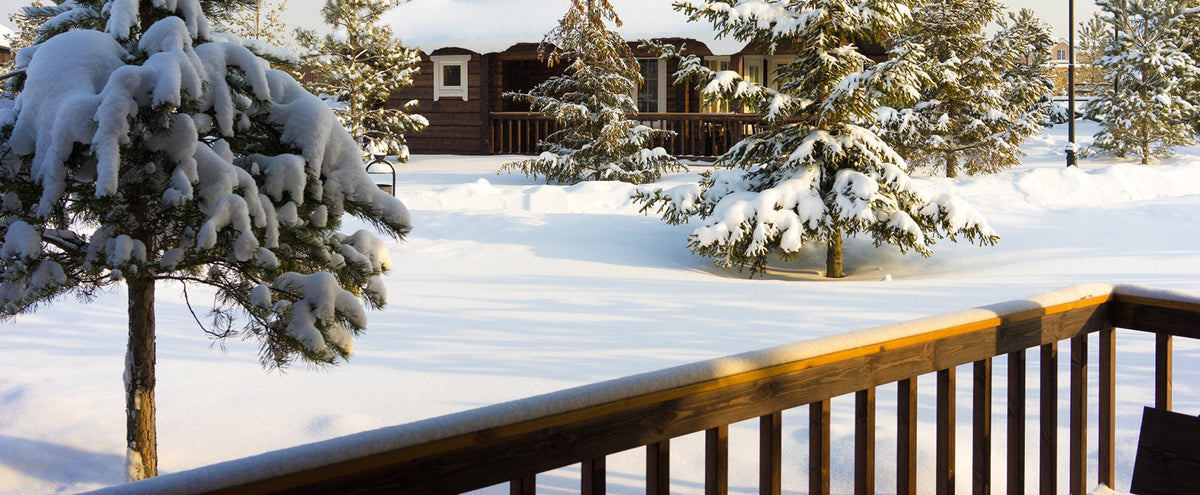

You’ve raked and bagged leaves, covered outdoor faucets, and stocked up on snow gear. But what should you do with your outdoor furniture when winter comes?
To extend the life of your patio furniture, make storage preparations now for things you don’t want left in the cold later.
Furniture You Can Leave Outside Year-Round
High-Density Polyethylene (HDPE) Furniture
Pieces made from durable, weather-resistant HDPE lumber, including Trex Outdoor Furniture, are fine outside year-round.

Aluminum Furniture
Just ensure the pieces are dry, both inside and out. This prevents water from getting trapped and freezing inside hollow parts of the furniture, which can lead to warping and damage.
Wooden Furniture
Make sure your furniture is thoroughly dry before putting breathable covers on it. This helps prevent trapped moisture from getting into cracks and crevices, where it can freeze and expand in cold climates, causing damage. In warm climates, the trapped moisture can promote mold growth.

Although some pieces can stay on the patio year-round, to extend their lifespan, consider storing furniture elsewhere if you have space and won’t be using the outdoor area.
Furniture You Should Store Indoors During Winter
Umbrellas, Cushions & Outdoor Rugs
This is optional, as furnishings made with all-weather performance fabric can handle snowy or rainy winters without issue. However, keeping outdoor accessories out of the elements in the off-season cuts down on future cleaning and maintenance.

Stone Tabletops
In cold climates, moisture that seeps into the stone's porous surfaces can freeze and expand, causing cracks in the tabletop. In warm regions, temperature changes during winter can cause moisture to freeze, expand, and thaw, resulting in warping and similar cracking problems.
Wrought Iron Furniture
This type of furniture is susceptible to rust, so keeping it dry is essential. Wipe your down with a towel before moving them to your garage or shed for the season.
Natural Wicker Sofas & Chairs
In cold weather, the thin reeds in wicker furniture can expand and contract as temperatures change. This can cause them to warp, split, or break, damaging the furniture's appearance and structural integrity.

Plastic Furniture
Long-term exposure to cold air or heavy layers of snow can weaken certain types of low-quality plastics, making them more susceptible to breakage, cracks, or crazing. Store your furniture indoors to keep it safe.
For more specific guidelines on your patio pieces, check with your furniture manufacturer.
Winterizing Grills

If you have a grill that stays outside, consider bringing it indoors … unless you plan on using it.
Regardless, before winter sets in, take the time to detail and winterize your grill:
- Use a brush to gently loosen food off the grates, along with any rust.
- Remove wood chips or charcoal left in the grill.
- Wash and clean the grill according to the manufacturer’s instructions.
- If you plan on storing the piece inside, disconnect its propane tank or gas line before moving.
Furniture Cleaning & Storage Tips

You wouldn’t put a dirty plate back into your kitchen cabinet and leave it there for three months. Extend the same courtesy to your outdoor furniture.
- Brush off all loose dirt and grime, and take the time to repair any scratches and dings.
- Inspect the furniture’s hardware for signs of rust or stripping.
- If you spot corrosion, gently brush it away and apply appliance paint in the corresponding color.
- If possible, keep a designated spot open for furniture storage in the garage, a shed, or a workshop.
- Make sure all furniture is right-side-up.
- Stash your cushions in a storage bench or heavy-duty plastic bag when not in use.
